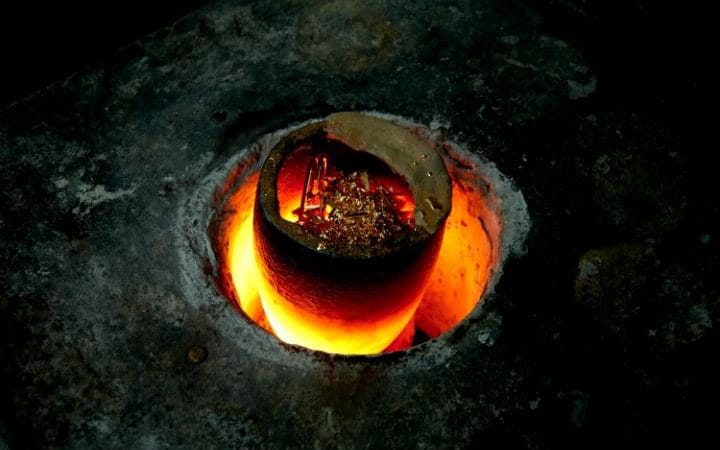What an 1895 Military Medallion & London’s Hatton Garden Teach Us About Real Gold Demand
As a reprieve from the charts, today we look at the expansion underway at Baird & Co. of London, discuss the physical demand driving it and wrap up with a look at gold’s post “dot com” portfolio performance.
Good morning Steemit. Please find below my article written today for www.ainsliebullion.com.au. See this post for context. Content hosted at
https://www.ainsliebullion.com.au/BullionNews.aspx
Picture yourself owning a golden military medallion dated 1895. It’s likely that you’d treasure it for its historical value or perhaps store it for price appreciation over time. With the demand for gold what it is today however, just such a medallion has recently found its fate in the “boiling pot” at the hands of Nick Hammond from London’s Baird & Co. gold refinery.

Baird & Co. refinery in East London - telegraph.co.uk
So called “scrap” gold is too valuable to be retained in trinket or medallion form and is hence melted down and re-cast at Baird’s East London refinery, the only one of its type in the United Kingdom.
The firm marks its 50th anniversary this year and supplies gold bars to the Royal Mint as well as jewellery to suppliers and the growing consumer market. In fact, as reported yesterday by the UK Telegraph’s Jon Yeomans, Baird & Co. has just opened the doors to a new retail store and vault facility in London’s gold and diamond district of Hatton Garden in order to service demand for the metal.
Often lost in the numbers is the reality of gold’s tangibility and what’s required to service the physical demand for gold right now. A perfect example comes from Mr. Hammond’s quote “The last time we changed the doormat, we recovered £6,000-worth of gold”. Indeed, those who have been on the Perth Mint’s tour will recall hearing something similar about residual gold embedded in the vicinity of the furnace.
Such recovery efforts are justified when considering that a staggering 20.8 million ounces of gold transactions cleared in London during the month of May alone.
The opening of Baird’s new retail outlet is only part of the story however. It has also been announced that the firm is looking to expand its network of gold suppliers by exploring primary mining sources in Africa. This is an endeavour that would not be undertaken in a low demand environment.
According to the WGC (World Gold Council), global Q1 gold bar and coin demand increased by 9% and despite the recent price declines that we’ve been covering, gold investments are still almost 7% higher year to date.
Sharps Pixley Chief Executive Ross Norman suggests that “where gold really performs is in the long term - it maintains its purchasing power over time. You could use it to buy a suit of armour 500 years ago. You could use the same amount to buy one today. Try doing that with cash.”
In support of this, we couldn’t finish today’s article without a chart. Again from the UK Telegraph, the following plot illustrates the performance of various share to gold portfolio allocation ratios over the last 18 years.
It can be seen that over this time period, the higher the gold allocation the more pronounced the peaks and troughs in the plot are and, ultimately, the higher the ultimate ROI (Return On Investment). In this particular example the 5% gold allocation returned 228% where the 50% allocation returned 321%.
James Connington of the Telegraph summarises as follows.
“Gold maintained its price during the technology-fuelled stock market collapse of 2000-2003, and then gained further during the Iraq war and in response to corporate scandals such as energy giant Enron's collapse. It soared ahead of the FTSE World Index when the global financial crisis hit, and posted its biggest gains in the nervy years that followed”.

We’ll wrap up with another quote from Sharps Pixley CEO Ross Norman who succinctly said that “once people get gold in their hands, they understand it, the tangibility of it”. Is it time to hold some in your hand?
Surely a golden military medallion dated 1895 would retain a higher value in that form? It's not like it doesn't hold it's gold value in a form other than a bar and the military history value here would be immense.
In my hands I would feel the same way @forexbrokr, but I imagine that retention of such items is not in Baird's core business model whereas maximising metal throughput is. The apparent insanity of Nick Hammond's move is exactly illustrative of the lengths that suppliers go to in order to furnish demand.
Touché. Each to their own ;)
Indeed! What a shame. I guess such are the realities of modern market distortions. If they're going as far as African mines their supply channels must be pretty desperate.